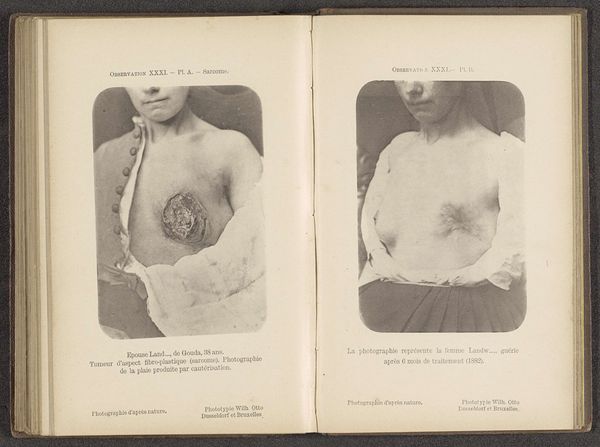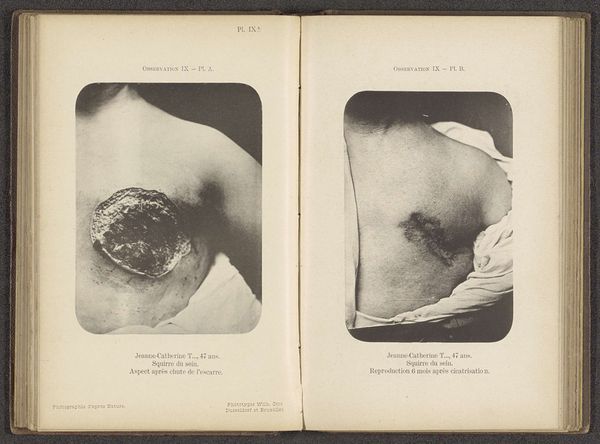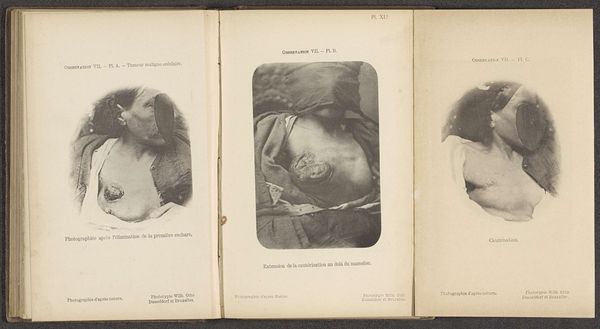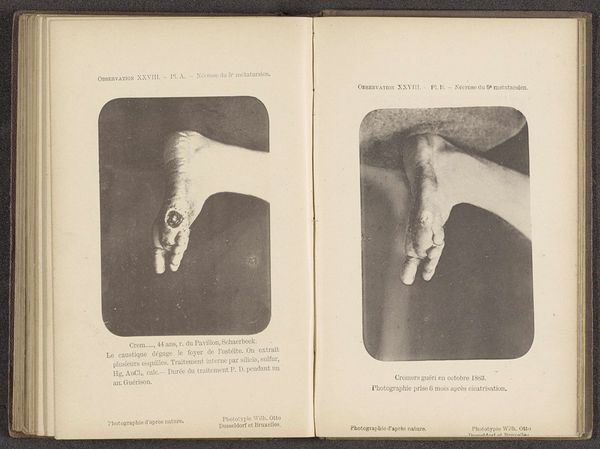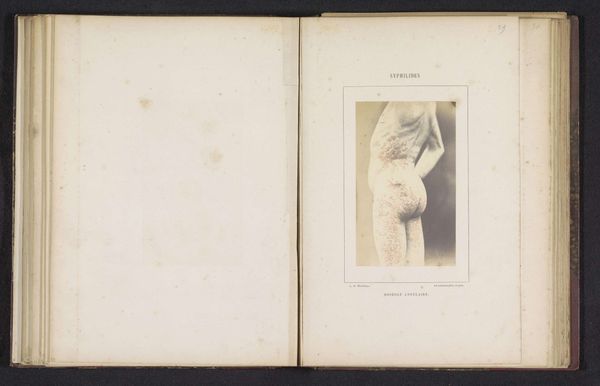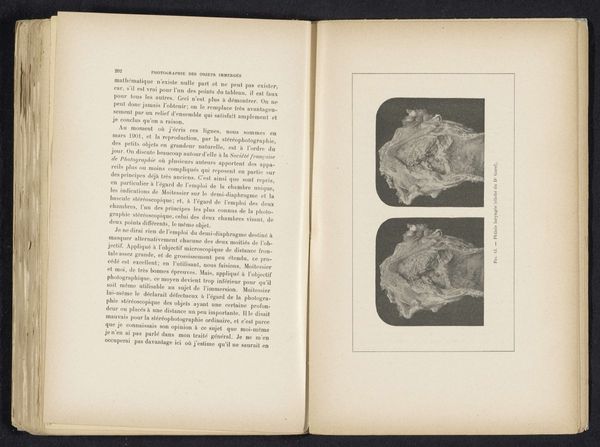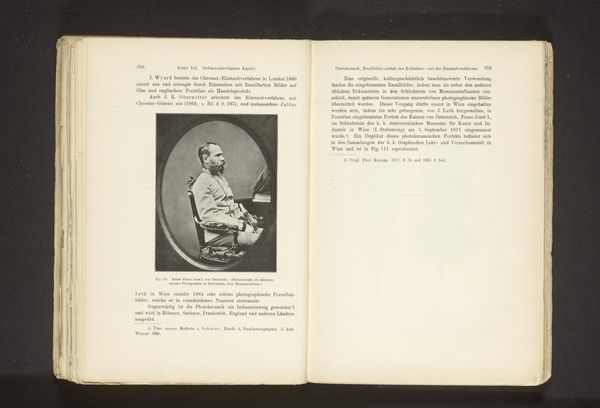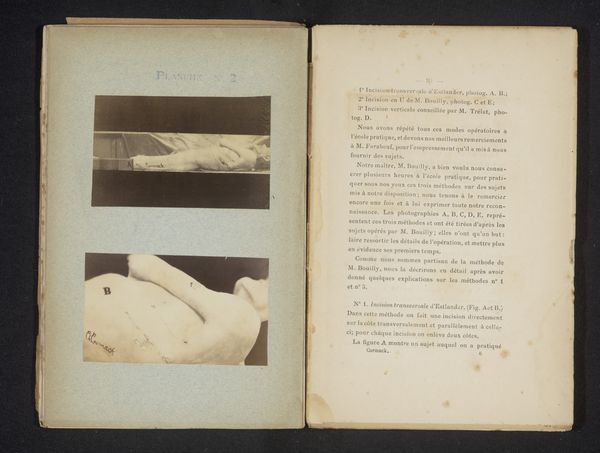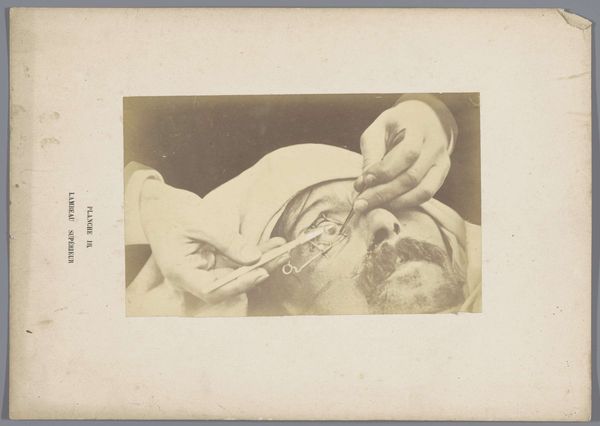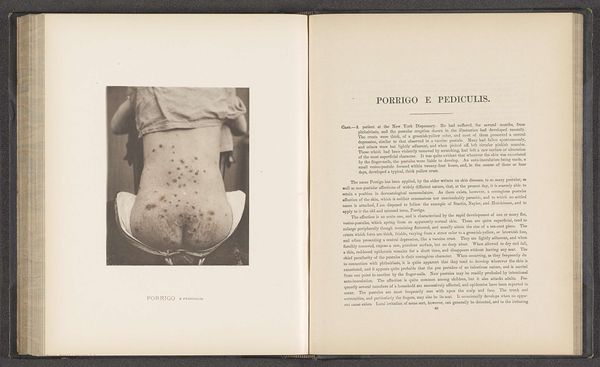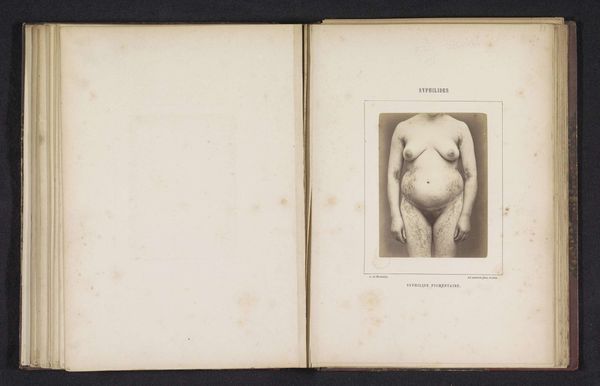
Vrouw met een litteken op haar borst na het verwijderen van een borsttumor before 1884
0:00
0:00
photography, gelatin-silver-print
#
portrait
#
photography
#
gelatin-silver-print
#
nude
#
realism
Dimensions: height 115 mm, width 90 mm
Copyright: Rijks Museum: Open Domain
Curator: Here we see an unsettling gelatin silver print created before 1884 titled, "Woman with a Scar on her Chest After Removal of a Breast Tumor." The photograph resides within what appears to be a medical textbook or journal. Editor: My gut reaction? Stark. There's this… clinical coldness, and yet a strange, quiet dignity radiating from the woman in the image. The missing face amplifies both those sensations, doesn't it? Curator: Absolutely. The removal of the face—obscured or absent—strips away individual identity, transforming her into a specimen, representative of a condition, but then also paradoxically rendering her every woman in a similar plight. This photograph likely served as documentation of a medical case, and this specific anonymity may have preserved her identity in that very vulnerable moment. It invites our respect despite the obvious invasion of privacy from today's standards. Editor: Precisely, like she's a type—but what strikes me is the sheer...unvarnished honesty. It's a body laid bare, quite literally, isn't it? In art, even in portraiture, there's usually some form of idealization. But here, there is no soft filter or graceful pose—it's simply raw reality. Look how closely the other breast droops, how light finds every imperfection, the soft paper reflecting that, yet without exploiting her condition for crude reasons, unlike certain depictions during that era. Curator: The accompanying French text likely details her medical history, treatment involving caustics, elements like arsenic. In photographic terms, this realism speaks to the era's scientific aspirations, the belief in objectivity through the lens. But as viewers, can we truly separate the "scientific" from the profoundly human element on display? The emotional reverberations feel very… modern. Editor: You're right. We bring our sensibilities to it. Despite its historical purpose, I can't help but wonder about this woman, her fears, her strength, the community she had... Or imagine being her doctor. This picture lives beyond its initial intent, inviting a deeply empathetic gaze. Curator: Indeed. This work exists at the nexus of scientific record and poignant testament to human frailty, urging us to consider not only the medical narratives, but the stories of the person at its very center. Editor: For me, it prompts me to question the visual codes we take for granted, those ways in which images, whether artistic or documentary, can reveal and conceal in the same instance. And of course, how important it is to resist dehumanizing portrayals and see beyond labels of "specimen" and just acknowledge "person."
Comments
No comments
Be the first to comment and join the conversation on the ultimate creative platform.

